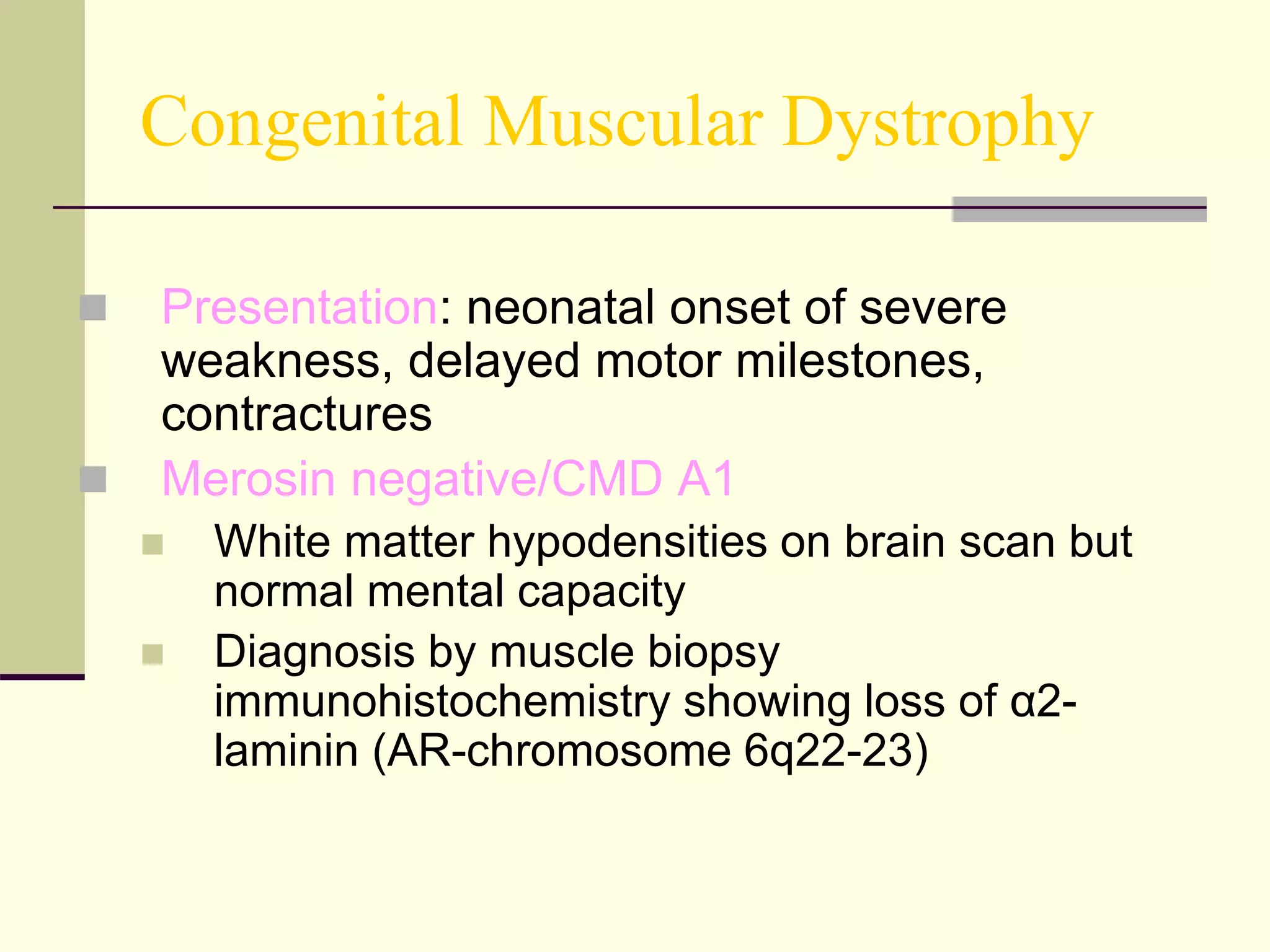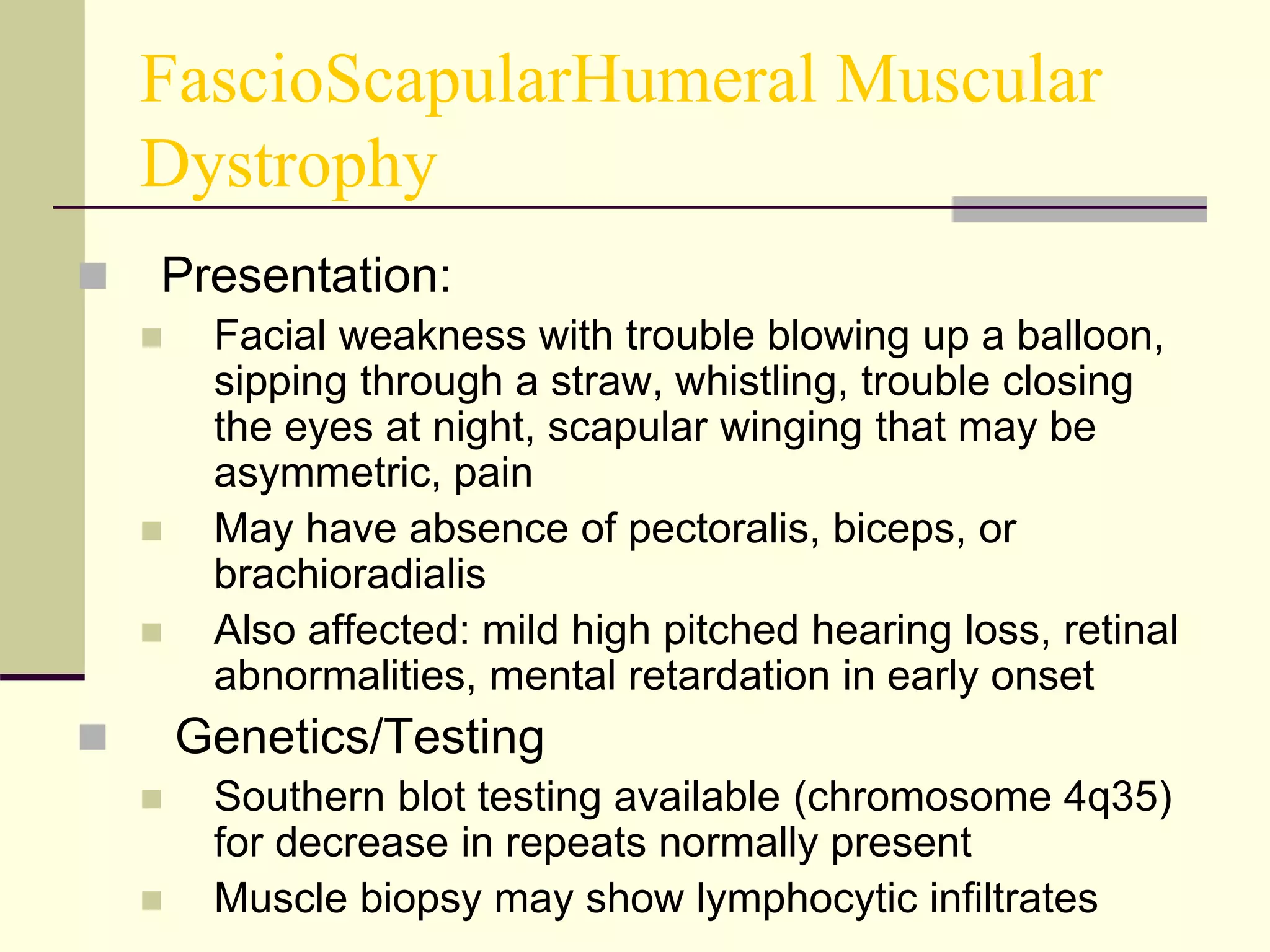The document discusses various types of muscular dystrophies that can present in childhood, including Duchenne Muscular Dystrophy. It describes DMD as the most common and severe dystrophy characterized by progressive muscle deterioration and death typically by age 18. DMD is inherited in an X-linked recessive pattern and results from mutations in the dystrophin gene on the X chromosome that prevent normal dystrophin protein production. Symptoms begin in early childhood and include difficulty walking and increased calf size, with loss of walking ability by age 12 and eventual respiratory or cardiac failure. While there is no cure, treatment focuses on rehabilitation, bracing, respiratory support, and medications to slow disease progression.








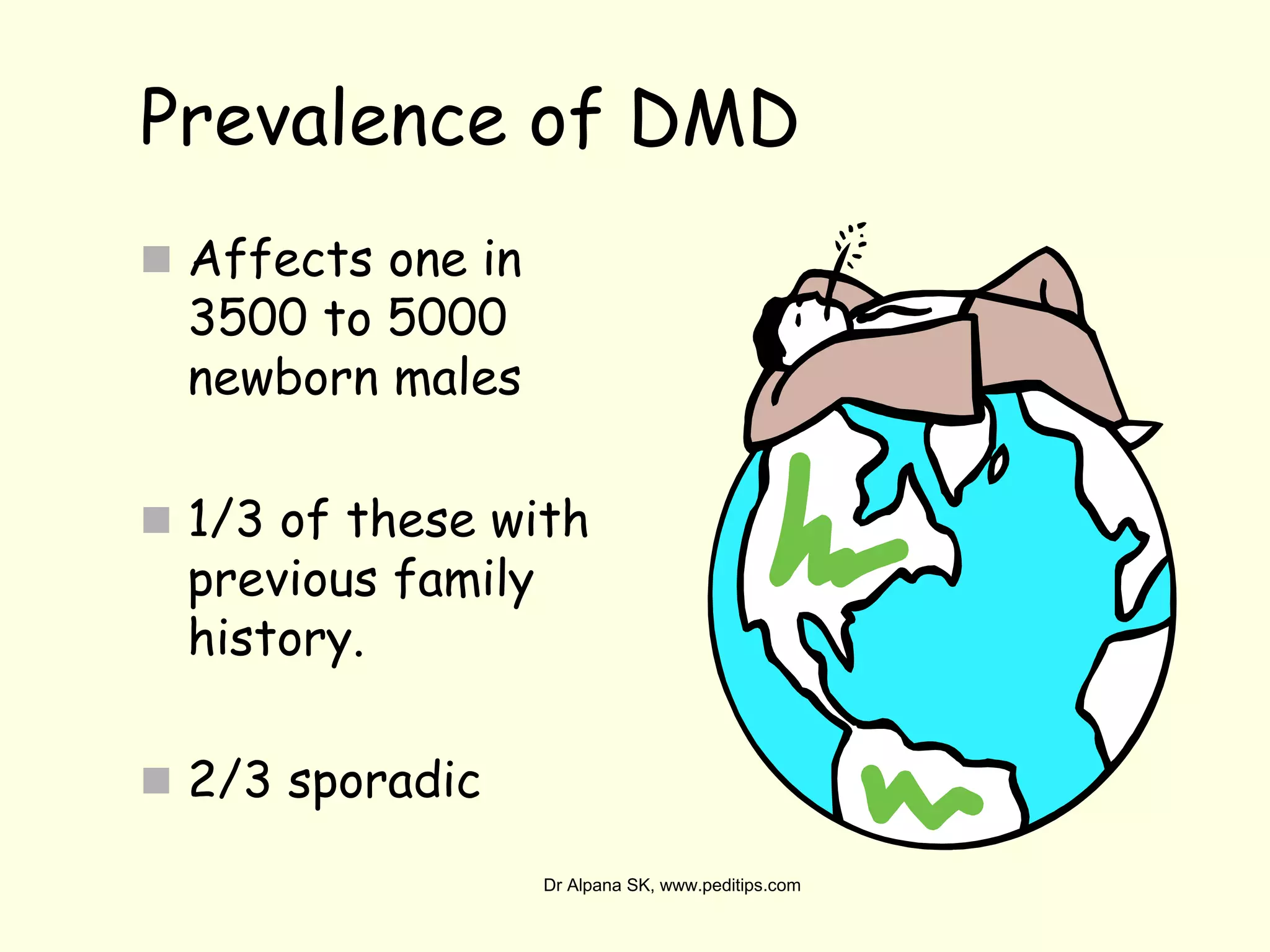


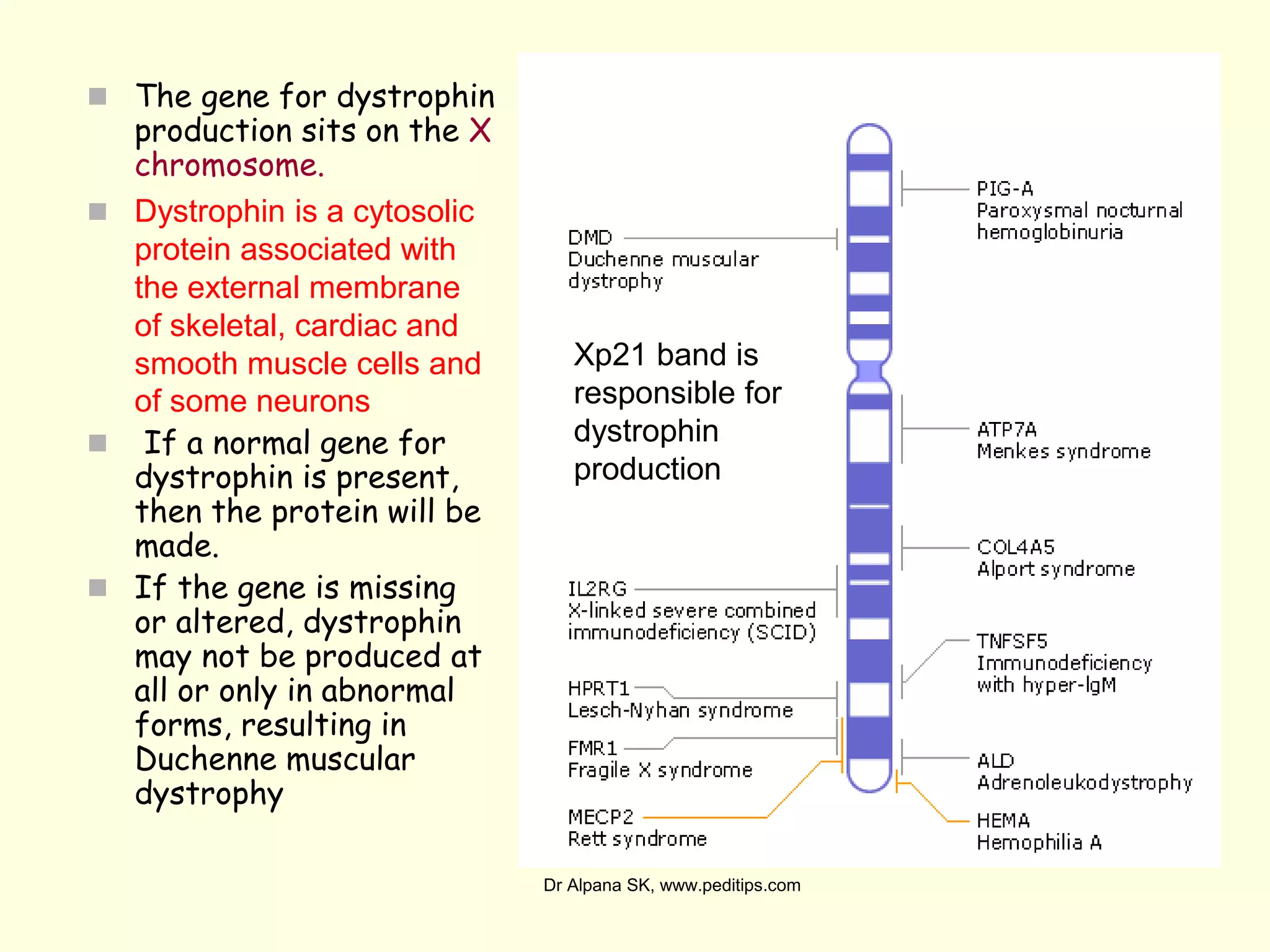








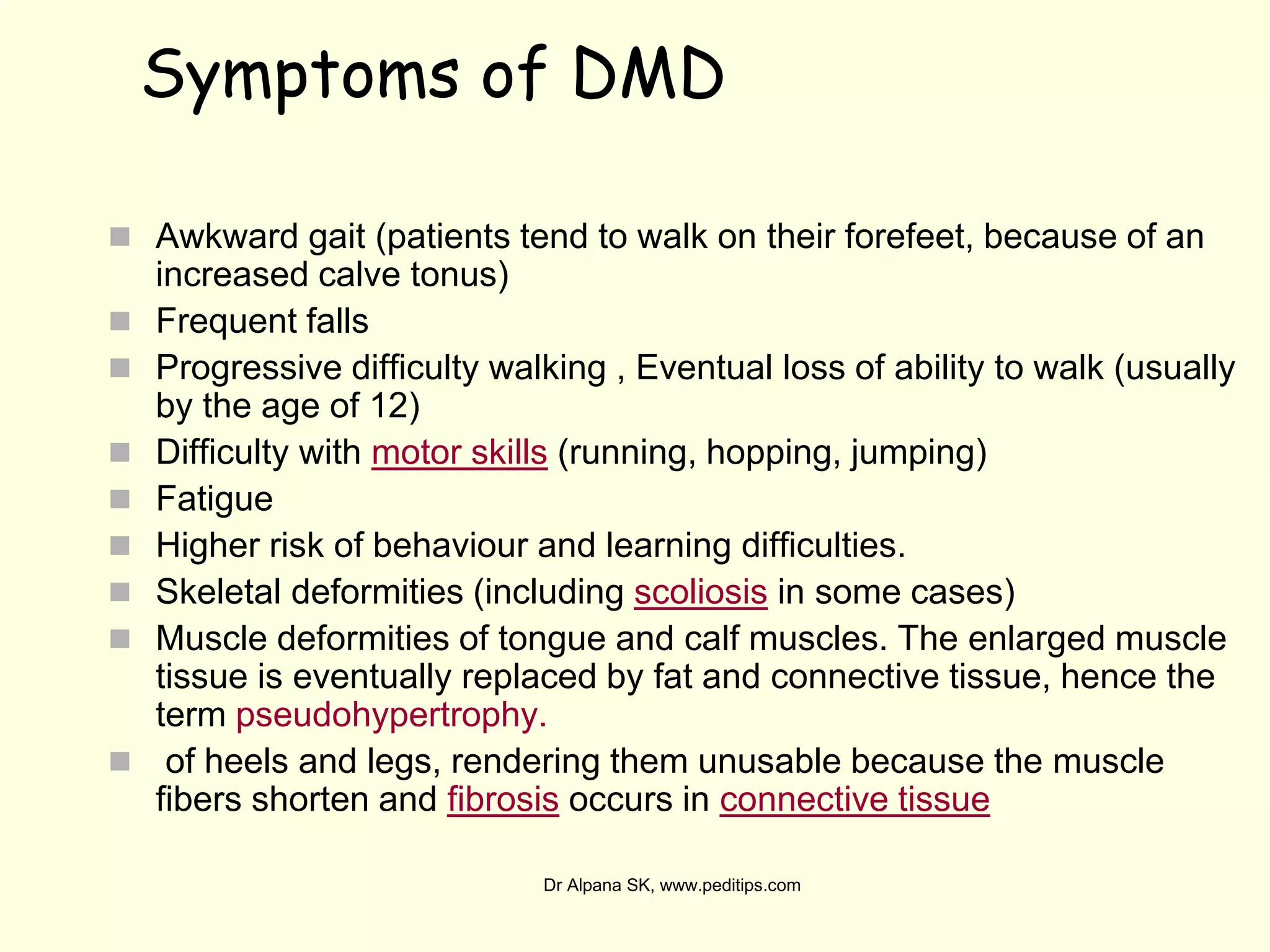




![Dr Alpana SK, www.peditips.com
Diagnosing Muscular Dystrophy
CPK test
In DMD patients CPK leaks out of the muscle cell
into the bloodstream, so a high level (nearly 50 to
100 times more) confirms that there is muscle
damage. Affected individuals may have a value as
high as 15,000 to 35,000iu/l (normal = 60iu/l).
DNA test
The dystrophin gene is composed of 79 exons, and
DNA testing and analysis can usually identify the
specific type of mutation and the exon or exons
that are affected. DNA testing confirms the
diagnosis in most cases.[3]](https://image.slidesharecdn.com/myopathyanddmd-150809181613-lva1-app6891/75/Muscular-Dystrophies-in-Childhood-26-2048.jpg)









